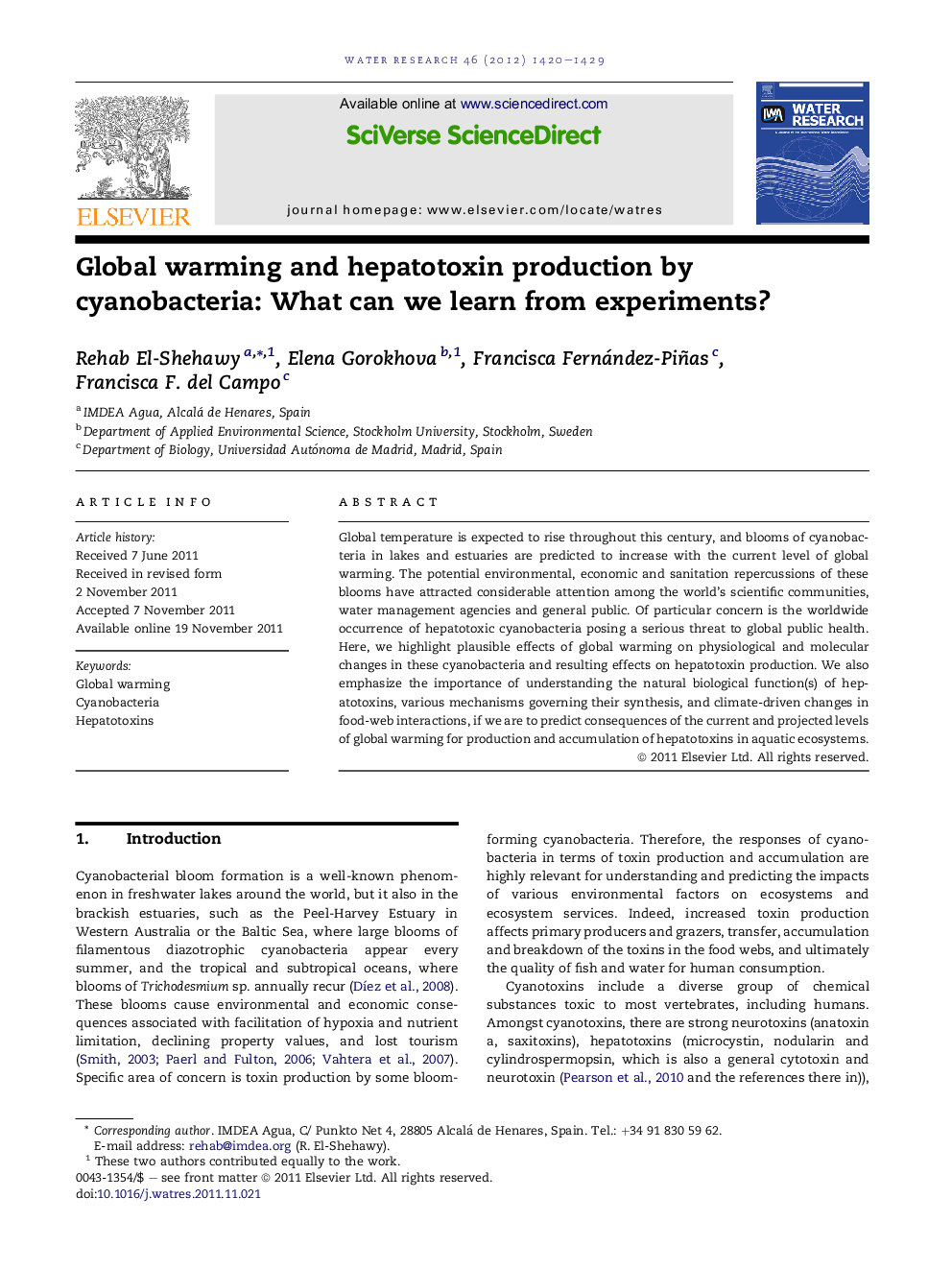| Article ID | Journal | Published Year | Pages | File Type |
|---|---|---|---|---|
| 4483622 | Water Research | 2012 | 10 Pages |
Global temperature is expected to rise throughout this century, and blooms of cyanobacteria in lakes and estuaries are predicted to increase with the current level of global warming. The potential environmental, economic and sanitation repercussions of these blooms have attracted considerable attention among the world’s scientific communities, water management agencies and general public. Of particular concern is the worldwide occurrence of hepatotoxic cyanobacteria posing a serious threat to global public health. Here, we highlight plausible effects of global warming on physiological and molecular changes in these cyanobacteria and resulting effects on hepatotoxin production. We also emphasize the importance of understanding the natural biological function(s) of hepatotoxins, various mechanisms governing their synthesis, and climate-driven changes in food-web interactions, if we are to predict consequences of the current and projected levels of global warming for production and accumulation of hepatotoxins in aquatic ecosystems.
Graphical abstractFigure optionsDownload full-size imageDownload high-quality image (56 K)Download as PowerPoint slideHighlights► We discuss the effect of warmer temperature on bloom proliferation by cyanobacteria. ► We discuss the concomitant effect on hepatotoxin production and food-web components. ► We also discuss the putative biological functions of hepatotoxins.
